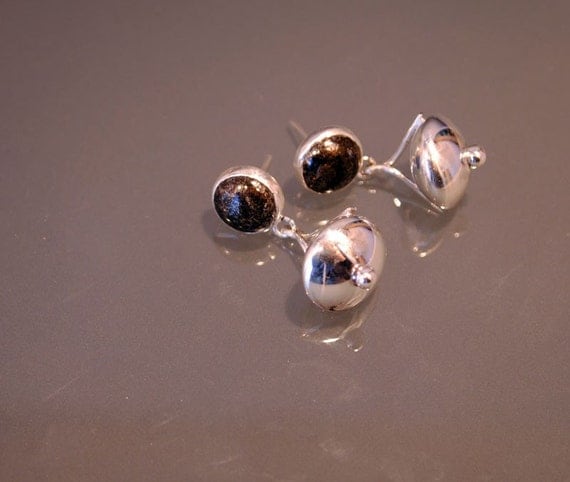All that glitters is not gold, which is true in the case of today’s gem the gold doppelganger, Pyrite or Fool’s Gold.
Geology Buzz
Pyrite is actually a mineral compound of Iron and Sulfide. It can often be found in Quartz veins, coal beds and also as a replacement mineral in fossils. It is present in both sedimentary and metamorphic rocks. Although this mineral has been nicknamed Fool’s Gold, it sometimes can be found alongside real Gold or contain Gold traces within it’s crystalline structure when Arsenic is also present.
When Pyrite is exposed to water and oxygen together, it can oxidize and has the tendency to turn a rust color, thanks it’s Iron content. It is opaque with a gold to brass metal luster and registers a 6-6/5 on Moh’s scale of hardness. When your Pyrite jewelry needs a little TLC, it’s best to just stick to mild soap and water, being sure to dry thoroughly with a soft cloth. Also, it’s a good idea to store it in its own box or compartment so it doesn’t scratch your other jewelry, since it’s pointy planes are fairly hard.
Fun Facts
Pyrite comes from the Greek word “pyr” for fire. This is most likely because pyrite was used for quite some time as a counter part to produce a spark on steel, much like flint and steel. It was even used in early 16th and 17th century fire arms to create the spark that would ignite gun powder. It also was a component in early radio receivers that used crystal technology to conduct and receive radio signals. The Greeks and Romans also used Pyrite for jewelry because they believed the presence of the fire was contained inside the stone, making it a source of mysterious power.
Pyrite is a great jewelry choice for those who have a creative bent. It is believed to open both the right and left sides of the brain, releasing imagination and creative talents. It also is thought to promote a connection between the subconscious and conscious mind.


No comments:
Post a Comment